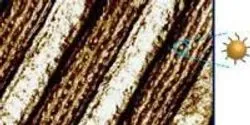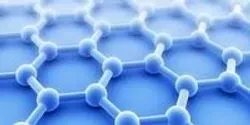Materials Science

A new biosensor invented at the University of British Columbia could help optimize bio-refining processes that produce fuels, fine chemicals and advanced materials by sniffing out naturally occurring bacterial networks that are genetically wired to break down wood polymer.

For the ever-shrinking transistor, there may be a new game in town. Cornell University researchers have demonstrated promising electronic performance from a semiconducting compound with properties that could prove a worthy companion to silicon

In 2006, Austin, Texas, became the first city in the country to ban a commonly used pavement sealant over concerns that it was a major source of cancer-causing compounds in the environment. Eight years later, the city’s action seems to have made a big dent in the targeted compounds’ levels — researchers now report that the concentrations have dropped significantly.

By levitating a bead of ceramic oxide, heating it with a 400-watt carbon dioxide laser, then shooting the molten material with X-rays and neutrons, scientists with the U.S. Department of Energy's Oak Ridge and Argonne national laboratories have revealed unprecedented detail of the structure of high-temperature liquid oxides.

The days of self-assembling nanoparticles taking hours to form a film over a microscopic-sized wafer are over. Researchers with the U.S. Department of Energy (DOE)’s Lawrence Berkeley National Laboratory (Berkeley Lab) have devised a technique whereby self-assembling nanoparticle arrays can form a highly ordered thin film over macroscopic distances in one minute.

The Office of the Vice President for Research at Wayne State University announced today the finalization of a license agreement with a new start-up company, Detroit Materials, Inc., for a Wayne State University patented portfolio of high-strength low-alloy steels and cast irons for demanding applications in the defense, off-highway, tooling and automotive industries.














